|
|
|
|
Tarot and virtues
Part 1: the Four Cardinal Virtues |
|
Purity and self-control – both represent the virtues of balance. This balance is hidden in three great powers: the mind, the heart, and the willpower. As soon as you lose the balance between the mind, the heart and the willpower, there is a fall, and every fall results in suffering.
22 August, 1920
Peter Deunov
|
Virtues as guiding dispositions and character-traits deemed essential for human flourishing
'Love virtue, you who are judges on earth' (Wisdom 1:1)
As many of you know, my philosophical reading and reflections have been influenced by Rudolf Steiner, Bernard Lonergan, and John Deely. Of course, other important thinkers have also been present: who can overlook the incredible insights offered by Plato, Augustine, Henri Bergson, von Balthasar, Tomberg - amongst numerous others. Important amongst the areas discussed and reflected upon, aside from epistemological considerations, has been ethics, and therefore the characteristic role played by various virtues.
Reflecting on the virtues, what strikes me - as well as, I am aware, many others - is that one would reasonably 'expect' an explicit inclusion of at least the four cardinal and three theological virtues to be included in a 'stable' tarot deck. I do realise that these do indeed form part and parcel of the 'expanded' 97-card Minchiate deck from the 16th century, as well as the 50-trump-like cards of the Mantegna. But not tarot - at least not explicitly.
The Four Cardinal Virtues
Let's first have brief mention as to what those cardinal virtues are, and some of their key characteristics. Though found in the Old Testament and other places, the four cardinal virtues have their culmination in Ancient Greece, and re-emerge 'supporting' other key virtues (usually the three 'theological' virtues or/and the three transcendentals). The cardinal virtues are:
Justice (or equity) - δικαιοσύνη (dikaiosynē;
One manifests Justice when one has respect and honour for everything alive in the world. (Peter Deunov) And a commitment to justice in your own acts. Which means: thought and action resulting in the common good. What you were born to do. (Marcus Aurelius)
Courage (or Fortitude/Strength) - ἀνδρεία (andreia)
Don't you know life is like a military campaign? One must serve on watch, another in reconnaissance, another on the front line ... So it is for us — each person's life is a kind of battle, and a long and varied one too. You must keep watch like a soldier and do everything commanded ... You have been stationed in a key post, not some lowly place, and not for a short time but for life (Epictetus)
Samson called on Yahweh and cried out, 'Lord Yahweh, I beg you, remember me; give me strength again this once, and let me be revenged on the Philistines at one blow for my two eyes'. (Judges 16:28)
Temperance (or Healthy-mindedness) - σωφροσύνη (sōphrosynē); and
'If you seek tranquillity, do less.' Or (more accurately) do what’s essential — what the logos of a social being requires, and in the requisite way. Which brings a double satisfaction: to do less, better. Because most of what we say and do is not essential. If you can eliminate it, you’ll have more time, and more tranquillity. Ask of yourself at each moment 'Is this necessary?' (Marcus Aurelius)
Wisdom (or Prudence) - φρόνησις (phronēsis) or σοφία (sophia)
The chief task in life is simply this: to identify and separate matters so that I can say clearly to myself which are externals not under my control, and which have to do with the choices I actually control. Where then do I look for good and evil? Not to uncontrollable externals, but within myself to the choices that are my own (Epictetus)
It is perhaps obvious that three of these are explicitly included in the tarot: we have VIII.Justice; XI.Fortitude; and XIIII.Temperance (notwithstanding the interchange by the Golden Dawn of Justice and Strength; nor the minor variations that occur in very early or un-numbered decks).
Here they are from the Noblet 1650 deck, an archetypical tarot in both representation and numbering:
  
...so WHERE is that expected fourth cardinal virtue? Of course, we can surmise its location in various ways: Plato associated wisdom with the ruling class (in his Republic), and the 'Wisdom of Solomon', certainly at the time of the creation of tarot, was an idealised view reflecting rulership of the Emperor - hence some have considered it reflected therein; others have linked it to the wisdom of old age, to the Hermit; yet others to the Chariot - perhaps a strange relation at first... yet as a reminder, wisdom is described in the Catechism of the Catholic Church (§ 1806), as the auriga virtutum, the 'charioteer of virtues' for it 'guides the other virtues by setting rule and measure'; still others have pointed to the World as the transcendent figure Sophia (Greek for Wisdom); and for similar reasons, given that Sophia is at times considered equivalent to Isis (with child Horus/Harpocrates), as the Empress.
de Gebelin from his Monde Primitif
Or perhaps, as first considered in 1781 by de Gebelin in vol. 8 of Monde Primitif (in which occurs two of the classical essays on tarot that have ignited its esoteric relevance and interest), it is reflected in Le Pendu (Hanged Man). It should be noted that this is whence originates the image's inversed representation as a man standing on one foot, often with a snake replacing the rope that usually ties his foot to the cross-beam. As he writes therein (pp371-372), with a mis-numbering of Temperance in both text and image (both Death and Temperance are numbered XIII - clearly an oversight in the context):
Nº. VIII. XI. XII. XIII[I].
The Four Cardinal VIRTUES
Nº XII Prudence is amongst the number of cardinal virtues: could the Egyptians have forgotten it amongst the images of Human Life? In any case, we do not find it in this deck. We see in its stead under the number XII, between Strength and Temperance, a man hanged at his feet: but what is this hanged man doing? It is the doing of a presumptious card-maker that did not understand the beauty and allegory within this frame, took it upon himself to correct it, and by this to disfigure it entirely.
Prudence may only be sensibly represented to the eyes by an upright man, that, having one foot on the ground, suspends the other examining the location where he may safely (or 'surely') place it [...]
Placed between Strength, Temperance and Justice, who cannot see that it is Prudence that is primitively represented?!
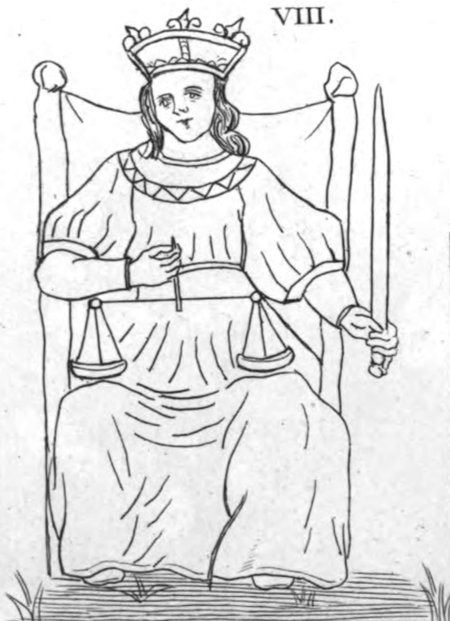 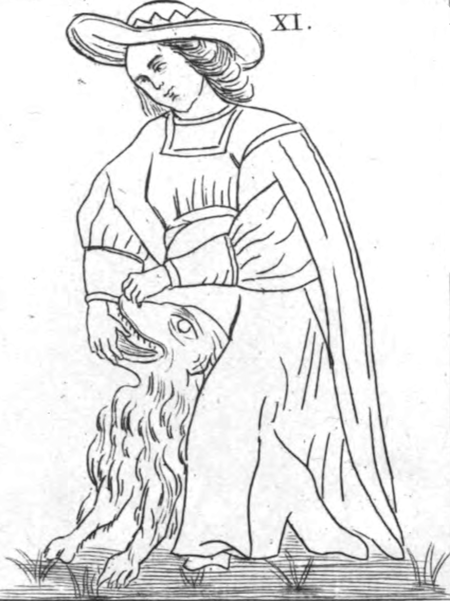 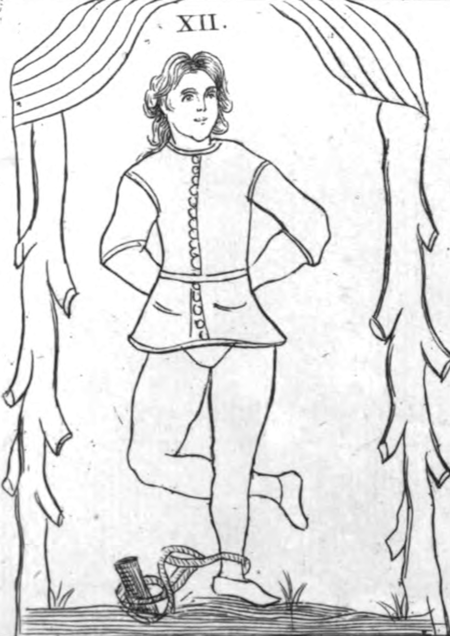 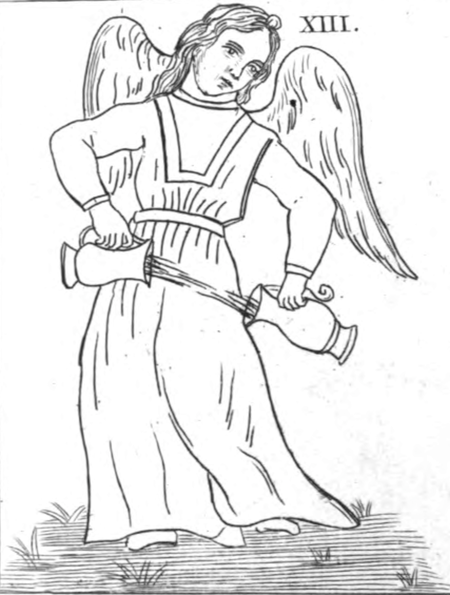
Another consideration with regards the possible (if at all) location of wisdom is to have this virtue seen as permeating the tarot as a whole, hence not represented as a specific card or emblem.
Though each and every one of those considerations have merit... and other options exist: amongst others, the Papess, the Wheel of Fortune, the Star, and the Fool have all been mentioned as candidates. Of course, each and every image does indeed have an element of either caution (and hence prudence), or deepening insight and teaching, hence wisdom.
Nonetheless, it has to be considered that the explicit representation of the fourth cardinal virtue does not form part and parcel of the living vibrancy of tarot's 22 trumps, and that, furthermore, it was also seen as somehow 'missing' from the deck even in the 16th century's creators of the 97 card Minchiate and 50 card (trumps only) Mantegna decks.
Minchiate and Mantegna decks' four cardinal virtues
The Minchiate's four cardinal virtues, though un-named, are easily recognisable (note the reversed ordering from standard tarot for the first three of these):
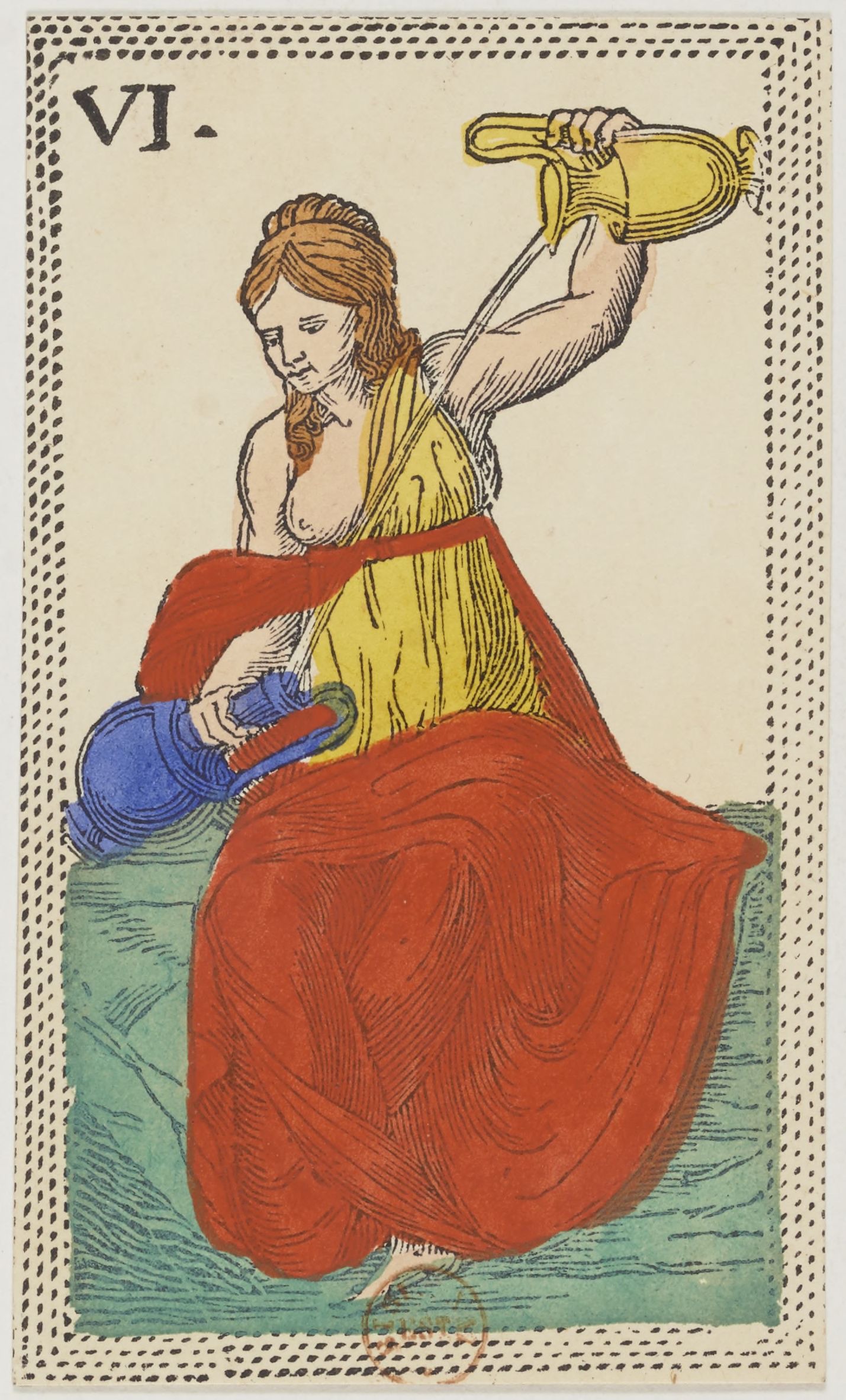 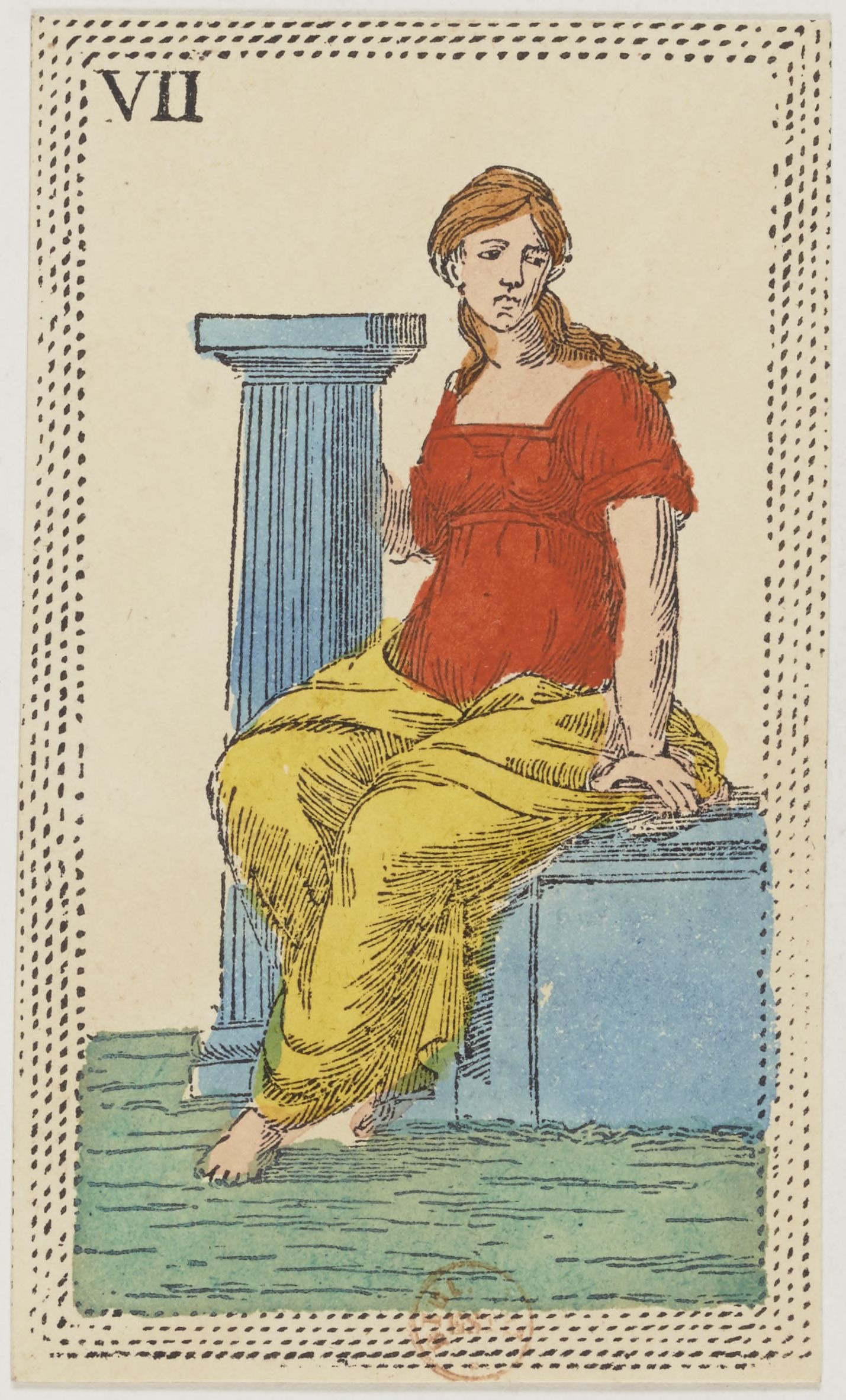 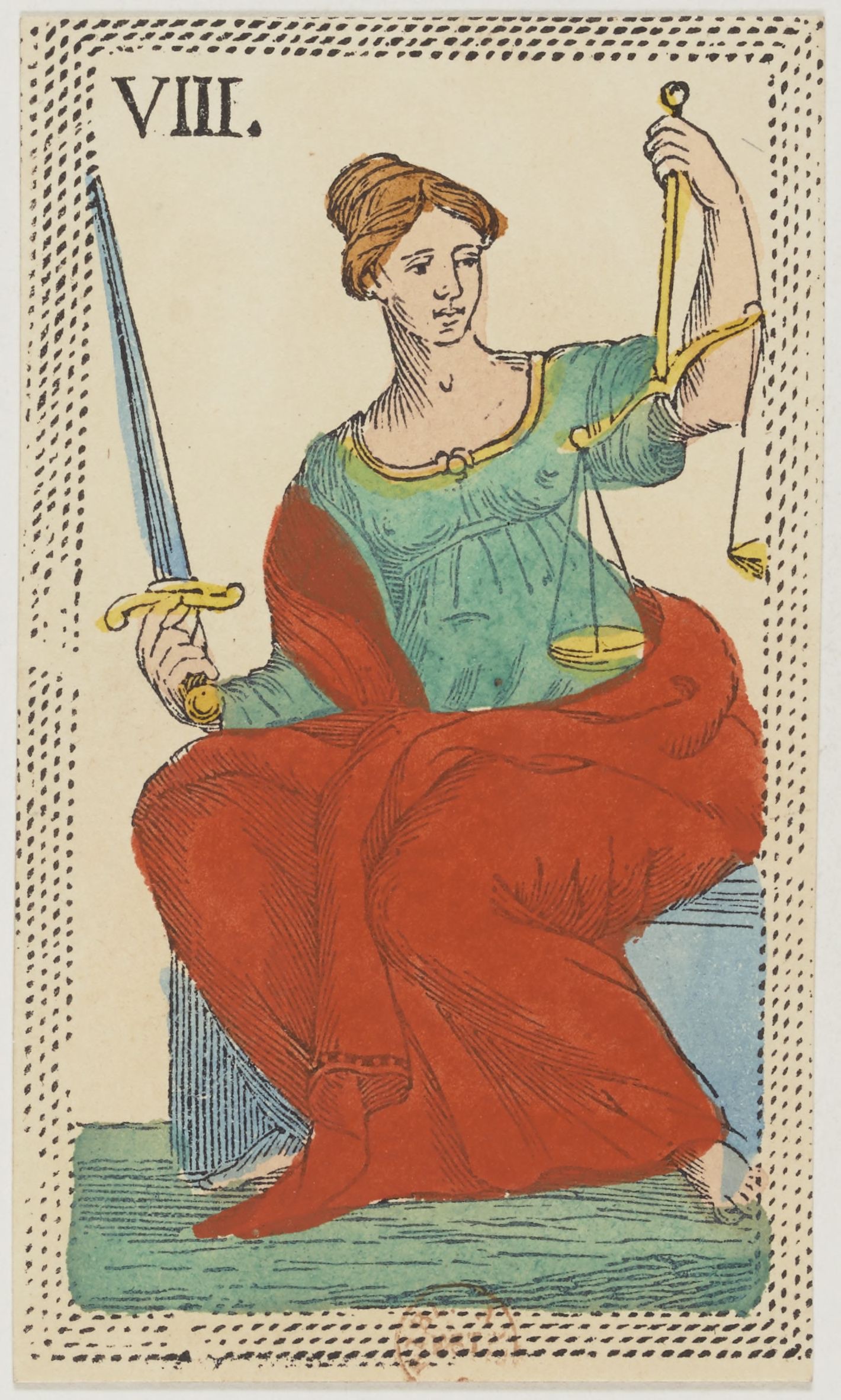 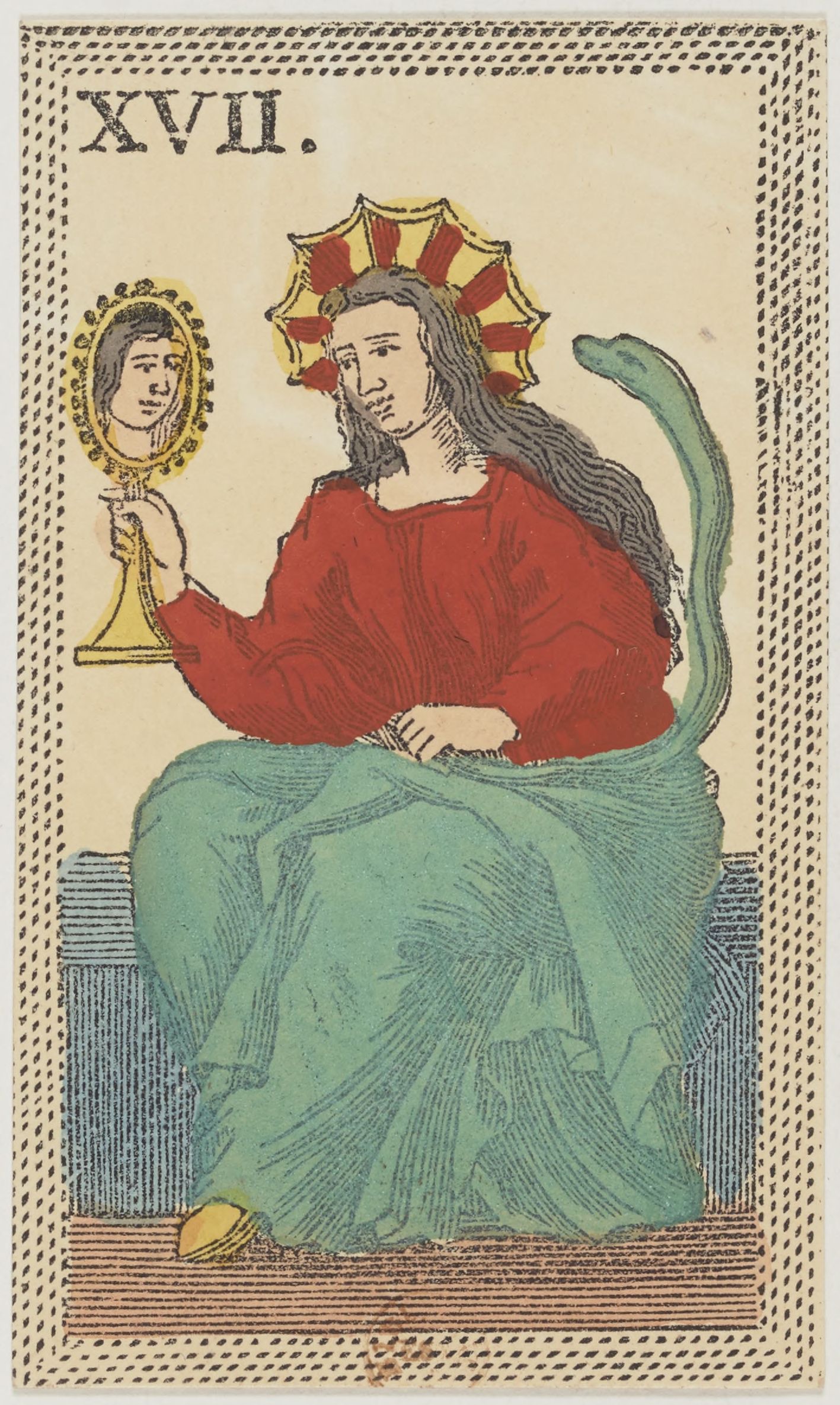
In the Mantegna, they are also easily recognisable as well as titled - and again their order is different:
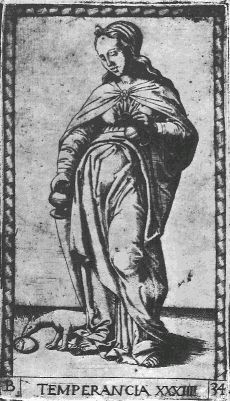 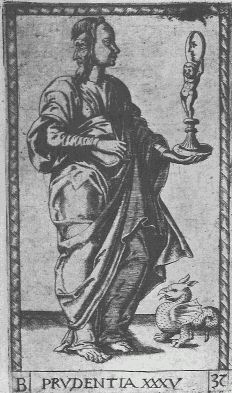 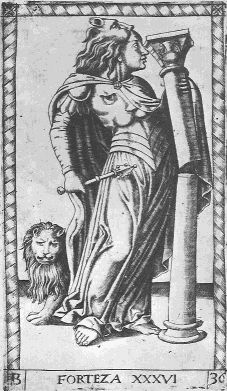 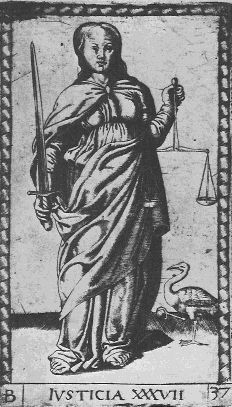
Brief overview of western philosophy's guiding principles
Though virtues are of course many, those four we have already briefly considered were certainly viewed and held as key guiding principles or guiding virtues upon which any other virtue or disposition towards the good hinged (hence 'cardinal'). Around the time of Christ, these were displaced by what became known as the three theological virtues ('theological' as they were mentioned by St Paul in 1 Corinthians 13:13), a key foundational text in the corpus of the New Testament. These three virtues, namely Faith, Hope and Love ('Caritas' in Latin, from which we derive the word 'charity', which has acquired a meaning quite distant from the original) are also 'missing' from tarot... though again, various cards have been said to represent these. Perhaps most evidently: Faith with (especially) the Papesse or Pope; Hope with the Star; and Love with the Lover(s).
These three virtues were also seen to incorporate or in some way underpin the cardinal virtues - not to replace them, but rather, importantly, to 'nourish' them. Without Faith, Hope or Love literally 'vitalising' (bringing living forces into) the cardinal virtues, Justice, Fortitude (strength), Temperance, and Wisdom were somehow deprived of their very being and spirit: their very essence.
It can probably be argued that the theological virtues had their culminating reflections as guiding principles during the (late) middle ages with especially (but not solely) St Thomas Aquinas, whose writings shaped theological reflections until the 20th century. These were, therefore, important during the Renaissance...
What happened then?!?
Three new concepts became increasingly important as guides for human flourishing, especially prominant with the publication, in 1853, of Victor Cousin's Lectures on the True, the Good, and the Beautiful. As an aside, it is probably worth noting that though now a virtually unknown and unacknowledged figure, Cousin was highly influential in not only post-Kantian continental Europe, but also with the changes occuring in India that gave rise, within another 50 years, to what we now understand by yoga (see on that, though not the subject of this post, Elizabeth De Michelis's A History of Modern Yoga, 2004).
That that these had their merit and consideration prior to the Renaissance - they certainly did, yet not as dominant themes. The three transcendentals of of Truth, Beauty, and the Good have their roots in ancient times, and yet... they finally germinate with such authors as Diderot and Konig (well after their seed has been planted - into the 18th and 19th centuries).
These three transcendentals have not, therefore, an explicit place in tarot as do Justice, Strength and Temperance,... and yet, again, find their reflection amongst various images and reflective considerations that I explore in another page.
|